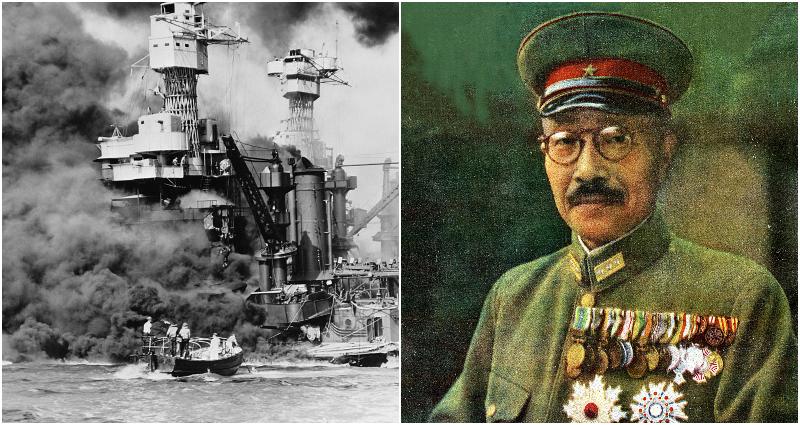
www.yahoo.com
This Man Ordered the Attack on Pearl Harbor
It took 75 years for a disgraced family in Japan to finally find peace. Last month, the remains of Hideki Tojo, the man who served as Japan’s prime minister for most of World War II, was approximately located. Born in Kōjimachi, Tokyo, on Dec. 30, 1884, Tojo was the third son of a lieutenant general in the Imperial Japanese Army (IJA).
Culture & Entertainment
It took 75 years for a disgraced family in Japan to finally find peace.
Last month, the remains of Hideki Tojo, the man who served as Japan’s prime minister for most of World War II, was approximately located. The discovery was published by a Japanese professor, who found the information in declassified U.S. military documents.
“If his remains were at least scattered in Japanese territorial waters ... I think he was still somewhat fortunate,” Tojo’s great-grandson, Hidetoshi, told the Associated Press.
“I want to invite my friends and lay flowers to pay tribute to him.”
Trained to Fight
Born in Kōjimachi, Tokyo, on Dec. 30, 1884, Tojo was the third son of a lieutenant general in the Imperial Japanese Army (IJA). As a child raised in the Meiji era -- whose education system incorporated military training -- Tojo was taught that war was the most beautiful thing in the world, according to Courtney Browne, who wrote his biography "Tojo: The Last Banzai."
Young Tojo was said to be known for his stubbornness, lack of humor and combative behavior, which landed him in frequent fights with peers. But while he was mediocre at school, he compensated through hard work and resilience.
“I am just an ordinary man possessing no shining talents. Anything I have achieved I owe to my capacity for hard work and never giving up,” he once said.
Unsurprisingly, Tojo had a long path toward becoming the Empire of Japan’s prime minister. Upon graduating from the Japanese Military Academy in 1905, he was commissioned as a second lieutenant in the infantry of the IJA.
Tojo steadily rose through the ranks and became the IJA’s major general in 1934. It was during his early career when he came to the U.S. -- his one and only visit -- and found Americans as materialistic people who devoted their lives to money and hedonistic pursuits.
In 1924, Tojo found himself offended over the Immigration Control Act, which banned all Asian immigration to the U.S. Lawmakers reportedly justified the legislation as necessary because Asians worked harder than whites.
“It [the Immigration Control Act] shows how the strong will always put their own interests first. Japan, too, has to be strong to survive in the world,” Tojo said.
Leading an Army
In 1941, Emperor Hirohito appointed Tojo as prime minister on the advice of Kōichi Kido, his leading political advisor. Kido, a prominent “reform bureaucrat,” served as Lord Keeper of the Privy Seal.
Following Tojo’s appointment, Prince Takamatsu wrote in his diary that, “We have finally committed to war and now must do all we can to launch it powerfully,” according to historian Herbert P. Bix, who wrote the Pulitzer-winning biography "Hirohito and The Making of Modern Japan." In his first speech as prime minister, Tojo called for “world peace” but stated Japan’s determination to establish the “Greater East Asia Co-Prosperity Sphere” (GEACPS) -- a concept aimed to unite all Asian nations together, free from the rule of Western powers.
The GEACPS drew appeal for its pan-Asian ideals, but it sought the advancement of Japan and asserted Japanese superiority over other Asians in practice, American historian John W. Dower wrote in his book “War Without Mercy: Race and Power in the Pacific War.” Japan would later use the concept to justify its actions in the war.
























































